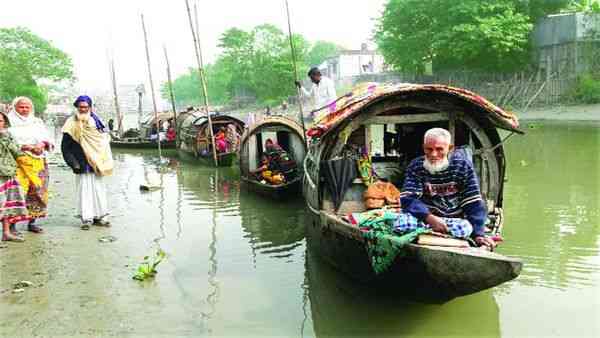The gypsies are a nomadic community in Bangladesh. Gipsy means nomad or vagabond. The gypsies are divided into 6 tribes: Malveda, Sapuria, Bajikar, Sandar, Tola, Mirshikari, Baryal Sanda and Gain. This community has been closely associated with the culture of Bangladesh for more than a century.

However, there are different opinions about the arrival of the gypsy community in this country. According to some, they came from the Bedouin tribes of distant Egypt, while others say that they ruled in the Hughli district of West Bengal, India. Moreover, someone said that gypsies are the successor of the Mallarajs of Bishnupur. It is difficult and debatable to determine which of these comments is about the arrival of the gypsy community. However, their primary habitat is in Savar, Joydebpur, Munshiganj, Sunamganj, Hatazari of Dhaka, and Chattogram division of Bangladesh.
Bangladesh is a riverine country, so the primary means of livelihood for the gypsy is a boat. Each family has their own boat. They form a fleet with many boats, and each fleet has a chief. During a voyage, the sardar serves as the head of the fleet and is the one who determines the next destination of the fleet.

Gypsies have their own language. The name of their language is Thet or Ther. They express this language only when they are talking to each other. However, when talking to ordinary people, they speak in Bengali.
About 90 percent of the gypsy community is illiterate. Despite being a vagabond, the past generation of gypsies did not have the opportunity to offer education to their child. From an early age, gypsy parents drive their children to various daily tasks so that they can quickly master what they are doing.
You may also like:

About 99 percent of the gypsy are Muslims. Some of them are followers of Pir or some are devotees of Mansa. Their similarities in the social relations of the Muslims of Bangladesh cannot be found. There are differences in their careers depending on the tribe. People of the Gain tribe sell spices and eye treatments for their livelihoods, releasing the venom of a person bitten by the snake, tooth decay clean, sells rheumatic oils and catch snakes. Sapuria gypsies sell snake amulets, snake medicine and show the game of snakes.

Gypsies have a social community. The gypsies live in groups. And one of their leaders is appointed to manage the team. They have to take refuge in the chief for various problems of daily life. It goes without saying that they do not associate with ordinary people as they are isolated from the mainland. So gypsies are very simple and honest in social life. Their standard of living is very low.
Like the article? Buy the author a coffee. Donate here
Although there is a touch of illiteracy in the gypsy community, child marriage and polygamy are not seen among them. Marriage is arranged in the family by mutual consent of the boy and the girl. The bride and groom and all those present at the wedding danced and sang. After the marriage is over, the bridegroom sits on the highest branch of the tree.
The bridegroom comes down from the tree only if the bride promises that she will take care of her husband's family and children. After marriage, the husband goes to his wife's family. The gypsy family is mainly ruled by the wife. The wives earn money by going to the market and people's houses, playing monkey games, showing dental treats, snake games or selling various things. And the men sit at home looking after the children and cooking.

The gypsy community is mixed throughout much of the culture of Bangladesh. They can be seen in stories, novels and even movies. The film "Beder Meye Josna" was produced in 1989 with respect to the gypsy community in Bangladesh and their way of life. This film was the highest-grossing film in Bangladeshi cinema.
In fact, the existence of the gypsy community is now on the verge of extinction. As the days go by, their number is decreasing. Now their fleet is not seen in the river. In search of a livelihood, they have given up their nomadic life and taken refuge in the land. Maybe this community was soon lost from the culture of Bengal.
Thank you for reading.
Recommended Reading:




